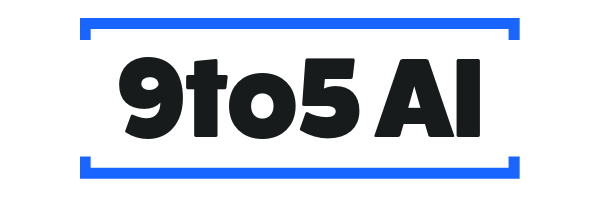What You Need to Know Before Bringing Generative AI Into Your Workplace

Hey there! Welcome to 9to5 AI No. 2, your go-to guide for exploring how artificial intelligence intersects with your everyday work and life.
To kick off the newsletter, I wanted to preface all the goodies I'm going to share here with some ground rules. You may have heard of all the crazy things AI can do, from creating deepfake images to writing haiku's of random topics. While those are things we may not have been able to do before, you are more than likely not going to present those as potential use cases at work.
In fact, using AI at work comes with many considerations, guardrails, and limitations. They vary by organization, but it's important that you understand these things before you dive in.
So, that's what this first edition is about. What you need to know before you bring AI into your workplace. And, even if it's already present in your workplace, this will give you a sense of how to responsibly integrate AI into your team and/or individual workflow.
Thinking about using AI at work? You’re not alone. When ChatGPT first launched two years ago, it felt like a novelty. But as I experimented with it, I saw its potential for transforming work processes.
However, integrating AI into your professional life isn’t as simple as downloading an app. In many workplaces, adopting new technologies comes with complexities—cybersecurity policies, organizational guidelines, and figuring out practical use cases. Here’s everything you need to consider before starting.
Step 1: Understand the Tools
Not all AI tools are the same, and knowing which ones are available is a critical first step. Some popular options include:
- ChatGPT by OpenAI
- Claude by Anthropic
- Google Gemini
For enterprise environments, tools like AWS Bedrock or Cohere offer solutions aimed at larger organizations.
There are many more out there, but here’s the key: understanding the difference between large language models (LLMs) and platforms for interacting with them. For instance, OpenAI’s GPT-4 is a model, while ChatGPT is a user-friendly interface for that model. ChatGPT has the ability to leverage many of OpenAI's models (e.g. 4o, 4o, o1-mini, 01-preview). Knowing these distinctions will help you identify what might work best for your use case and will help you decipher between different models, their capabilities and ways of using them.
For most people, the gateway to AI at work is going to include some sort of chat based interface like the ones I listed above.
Step 2: Align with Your Organization
Before diving in, find out how your organization approaches AI.
Here’s what you need to ask:
- Does my company already use AI tools?
- What policies or guidelines are in place for AI use?
- Are there specific AI tools I’m permitted to use?
- What are the security and privacy considerations for using AI?
- What types of data are safe to input into these tools?
If your organization hasn’t adopted AI yet, you might have the opportunity to shape its policies or advocate for pilot programs. Alternatively, some companies may allow employees to use public AI tools or require enterprise-grade platforms with enhanced security.
Pro Tip: Find out which teams or leaders are driving AI initiatives at your company. They can provide guidance and might even be looking for collaborators to support their efforts.
Step 3: Identify Use Cases
To make the most of AI, focus on tasks that could benefit from automation, efficiency, or new capabilities. Start by asking:
- What repetitive tasks could AI help me automate?
- Are there workflows that are prone to bottlenecks or errors?
- Is there something I’ve wanted to do but lacked the tools or time?
Documenting these use cases is essential. They’ll guide your exploration and ensure you’re solving meaningful problems rather than experimenting aimlessly. You'll quickly find that most of the learning and enlightenment with AI happens when you use it to solve challenges you or your team are having.
In future emails, I'll talk a little but more about how to prepare teams when adopting AI and how to measure the value of adopting AI at work, especially if it requires an ask of your leadership team.
Step 4: Get Comfortable Outside of Work
The best way to learn AI’s capabilities is through hands-on experience, even if it’s unrelated to work. Here are some examples of personal use cases:
- Generating meal plans or recipes based on what’s in your fridge.
- Planning a budget or organizing a family vacation itinerary.
- Writing quick summaries or brainstorming ideas for creative projects.
- Creating wild bedtime stories using people, places, things that are special to your little ones
- Using voice mode to have conversations about topics you're interested in or don't understand
These activities won’t just save you time—they’ll also give you confidence in using AI tools effectively. You'll also start to identify where these tools fall short, where they need more prompting and context and where they still have a ways to go.
Additional Considerations
Even with the steps above, there are a few unanswered questions you should keep in mind:
- How does AI integrate with existing tools?
Many organizations rely on tools like Excel, Microsoft Teams, or Slack. Explore whether your team uses any of these and if any of the AI tools offer integrations that can enhance your workflow. - How do I evaluate AI’s return on investment (ROI)?
Understanding the time or cost savings AI provides is critical. Will automating a task with AI save significant time? Will it reduce errors or improve quality? These are things to consider and that leadership might ask if implementing AI at your organization will require executive/leadership sponsorship. - What are the ethical implications of using AI?
Be mindful of issues like bias in AI models, copyright infringement, and the impact of automation on jobs. Consider how your AI use might align with company values and ethical standards. - What skills do I need to make the most of AI?
AI works best when paired with a strong understanding of your domain. Think about what technical or soft skills you might need to fully leverage the tools (e.g., prompt engineering or data analysis). - What’s the learning curve for my team?
If you’re planning to use AI collaboratively, how will you onboard colleagues or get them up to speed? Will there be training sessions, or will they need to learn as they go?
In Summary
- Familiarize yourself with popular AI tools and platforms.
- Understand your company’s policies and organizational stance.
- Document use cases for tasks that could benefit from AI.
- Experiment outside of work to learn what AI can do.
- Stay informed about ethical, technical, and organizational considerations.
Generative AI is evolving at rapidly. By taking a thoughtful approach, you can position yourself—and your organization—as an early adopter ready to leverage this transformative technology.
Stay in the Know
Some of the resources I use to keep up with what's new
• 🎧 Podcast: Hardfork by The New York Times – A fun light-hearted podcast that covers developments in AI and frequent segments on how the hosts and listeners use AI.
• 📄 Article: AI is confusing — here’s your cheat sheet - A great explainer by The Verge that breaks down some of the concepts worth knowing about AI
• 🎥 YouTube: This Thomas Frank video is the one that changed how I think (literally) and incorporate AI into my everyday tasks.
Signing off
That’s it for this edition of 9-5 AI! Got questions or want to share how you’re using AI at work? Hit reply—I’d love to hear from you.

